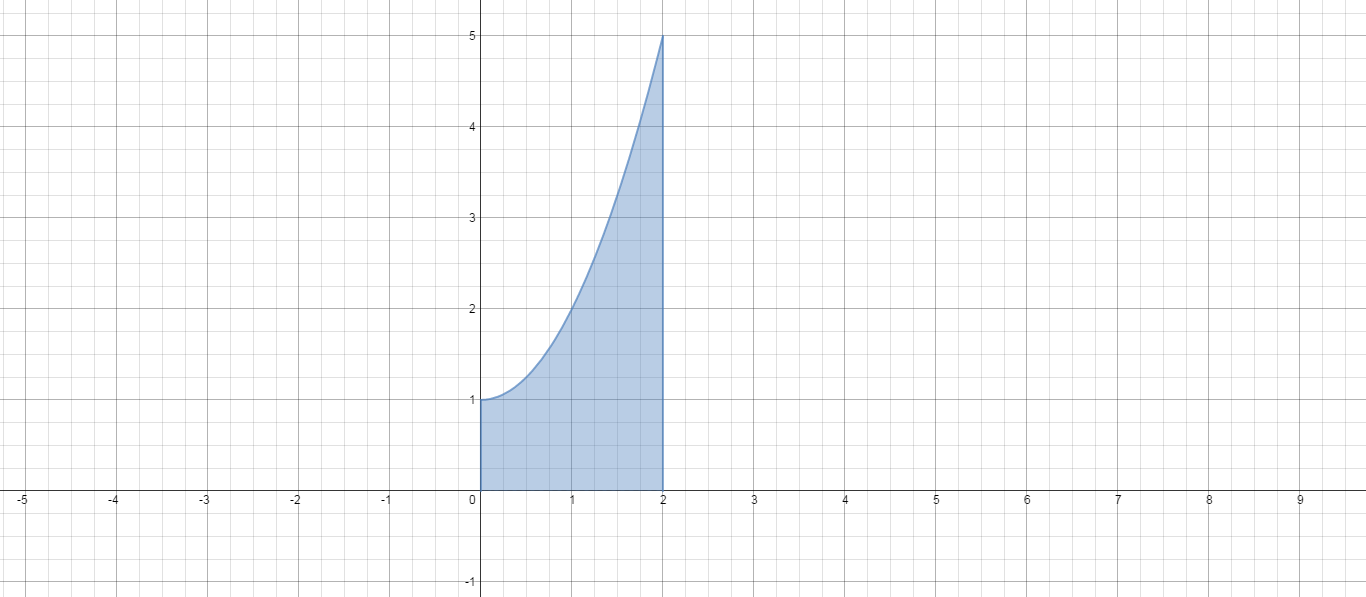How do you use the shell method to set up and evaluate the integral that gives the volume of the solid generated by revolving the plane region #y = 1 + x^2#, #y = 0#, #x = 0#, #x = 2# rotated about the x-axis?
1 Answer
See explanation below.
Explanation:
Here is the region to be revolved about the

If we must use shells, we will need to take our representative slices horizontally and use thickness
We need to rewrite the boundaries as functions of
Note that, in the region
For the 'height' of the shell (which is lying on its side), we will use the
For
(We could do an integral for this, but we learned the volume of a cylinder in geometry class.)
From
The radius of the representative shell is
We integrate:
Adding the two volumes, we get:
Note
If we had been allowed to use disks, we would integrate:
# = pi [x+(2x^3)/3 + x^5/5]_0^2#
# = pi [2+16/3+32/5] = pi [(30+80+96)/15] = 206/15 pi#
Of course, we get the same answer, but we only need to do one calculation and the integral is (I think) simpler.

